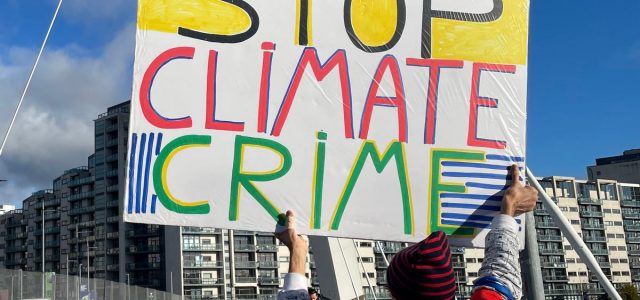
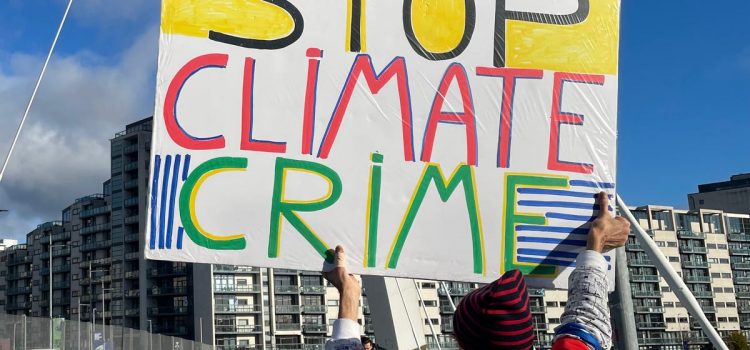

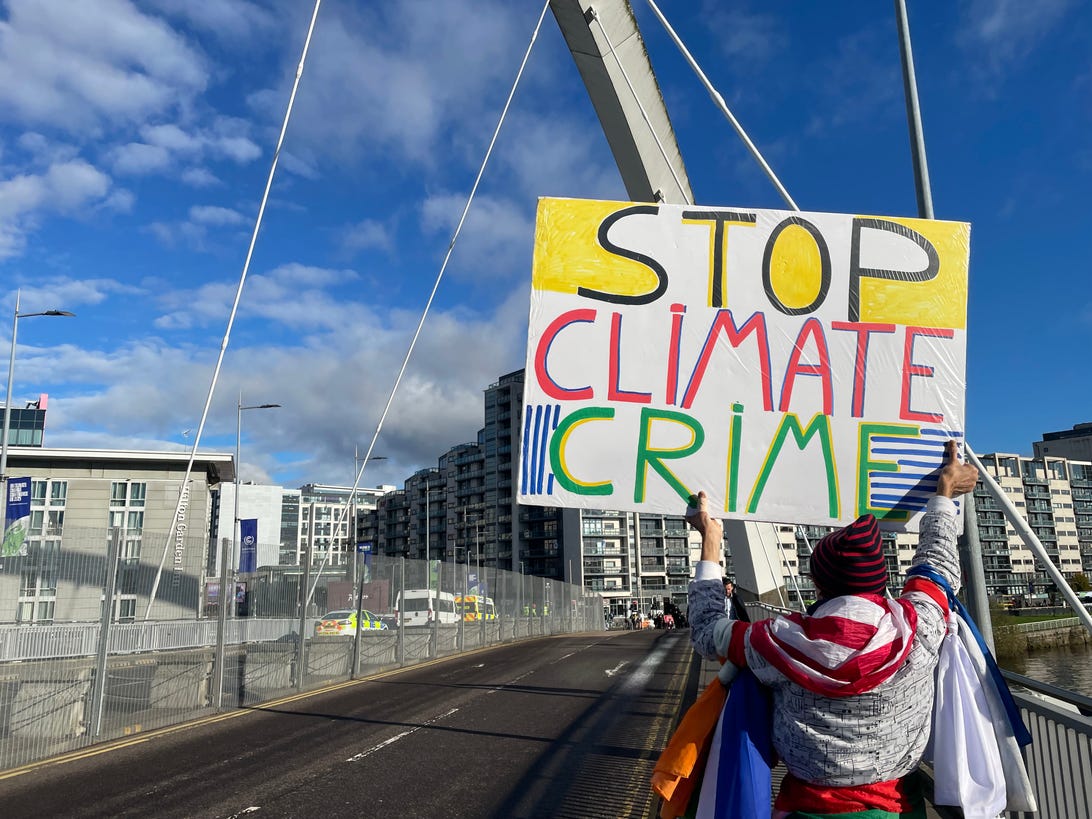
A protester outside of the COP26 Blue Zone.
Katie Collins/CNET
“What do we want? Climate justice! When do we want it? Now!”
So went the chant that echoed across the streets of Glasgow, Scotland, in November as the city played host to COP26, the UN climate summit. While heads of state and world leaders met in the summit’s heavily fortified “Blue Zone,” out on the streets and around Glasgow, the climate justice movement thrived — organizing rallies, marches and public assemblies.
Climate activists have historically been portrayed as everything from destructive and disruptive extremists to delusional hippies. They’re outdated and unfair stereotypes that ignore the diversity of people who are trying to secure a livable planet for future generations. Among their ranks you will find people from Indigenous communities who have been victims of colonialism, young women from small and developing countries, disabled people and those who belong to labor movements, as well as the scientists who have proved unequivocally that greenhouse gas emissions are causing global warming.
“Climate activists are sometimes depicted as dangerous radicals,” said UN Secretary General António Guterres upon the release of the latest IPCC report on the mitigation of climate change this week. “But the truly dangerous radicals are the countries that are increasing the production of fossil fuels.”
For many decades, climate activists have been well acquainted with the scientific realities of the climate crisis that many around the world are just waking up to — often because they are feeling the effects of it most keenly. They’ve been fighting a slow-burn battle against governments, businesses and lobbying groups who have obstructed public awareness, spread disinformation or refused to take the necessary action to tackle human-caused global warming by reducing our reliance on fossil fuels.
But more than that, they have been fighting for a transition to a different social and economic model, one based on the principles of climate justice.
What is climate justice?
Climate justice takes into account all of the inequalities in the world, looking at the social problems and systems that cause them, and demanding changes to both for the planet and for all people living on it. It recognizes the climate crisis is bigger than just a scientific problem.
In the words of Lauren MacDonald, a 21-year-old climate activist from Glasgow, it’s about “tackling the biggest problem that humanity has ever faced in an equitable way that understands and takes into account the role of systemic oppression.”
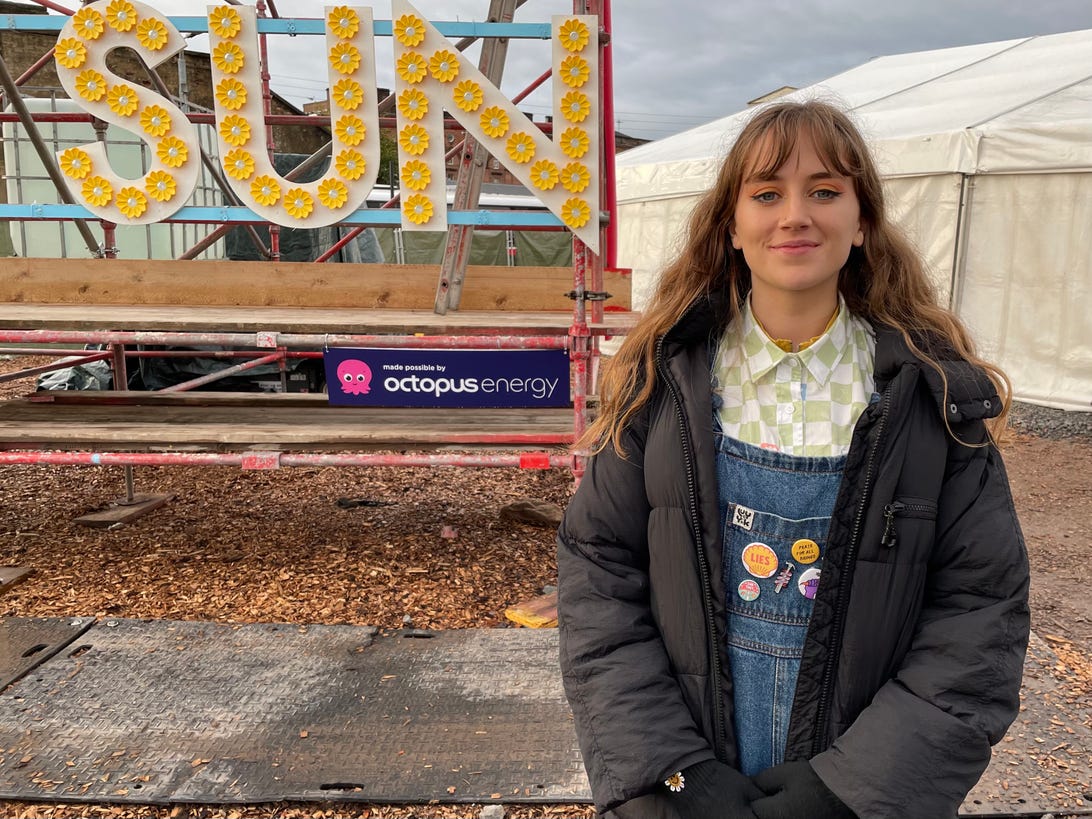
Lauren MacDonald, an activist for the Stop Cambo campaign.
Katie Collins/CNET
From its causes to its impacts, climate change disproportionately affects the most marginalized people and the least developed countries in the world. “The climate crisis is caused by the same root causes of multiple interlinked crises, of hunger, poverty, racism, sexism, classism, ableism, nature destruction and, of course, the same things that caused the COVID-19 pandemic,” said Mary Church, head of campaigns at Friends of the Earth Scotland, during COP26.
Not only are small and developing countries being most affected by the climate crisis, they did the least to cause it. The biggest historical polluters — countries such as the US and many European nations — have only in the last few years started to see the extreme weather events that have been causing devastation in countries such Bangladesh and the Philippines for decades.
“It incorporates the fact that you have the north and the south differing in the consumption level, and that the majority of the developing countries did not contribute to the level of greenhouse gases in the air at the moment,” said Dorothy Guerrero, head of policy at Global Justice Now. “And in the end, they are suffering the most.”
It’s why many of leaders of the climate justice movement are Indigenous people, people from developing countries and small island states, and others who are impacted by the climate crisis together under the acronym MAPA, meaning “most affected people and regions.”
There’s not just a geographical gap in people fighting for climate justice. The movement also sees a generational gap. Guerrero said many young people are mobilizing and protesting because they’re fighting for their futures and for solutions to problems they didn’t create.
But in both cases the movement is asking for these people’s voices, and not just those of governments and business, to be centered in any climate crisis negotiations. Activists want systemic change, and they want those who are most affected to lead that change.
“Anything without us is not for us,” said Margaret Eberu Masudio, a farmer from Uganda speaking at COP26. “So we want to be part of the discussion.”
What is the climate justice movement fighting for?
At the heart of the climate justice movement’s fight is the demand for a “just transition,” which will see global society move to become a low-carbon economy, while leaving no one behind. That means providing green jobs for workers, fair and equitable access to affordable, renewable energy and funding to those countries in need of it.
The latest IPCC report, released Monday, warned that if emission reductions policies are not designed around the principles of a just and fair transition, they could serve to increase inequality and poverty. But it also noted that by focusing on sustainable development, action taken to tackle climate change could benefit the health and wellbeing of both people and the planet. To do so, it emphasized the importance of protecting vulnerable populations from the impacts of climate change.
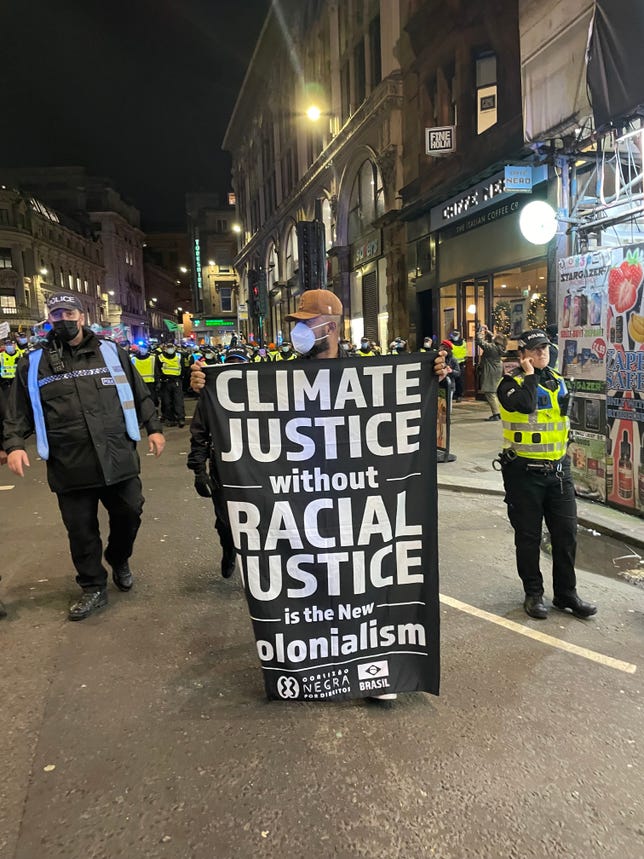
Climate justice is an intersectional movement.
Katie Collins/CNET
In addition, climate justice makes hefty financial demands. It asks for developed countries to cancel debts the global south owes them, grant-based finance to support a just green transition and reparations for the loss and damage already happening in those countries suffering the effects of climate change.
World leaders have agreed that this funding is necessary but have already failed to meet their commitment to give $100 billion a year to developing countries by 2020.
“Even if this money had materialized, it would have been a miserly token,” said author and environmentalist George Monbiot in a Guardian op-ed in November. “By comparison, since 2015, the G20 nations have spent $3.3 trillion on subsidizing their fossil fuel industries. Needless to say, they have failed to keep their wretched promise.”
This deadline has now been pushed back to 2023. For countries in the global south, a term used to identify developing countries, this comes “too little and too late when we talk about the cost of climate change,” Guerrero said.
What is the role of climate justice in international climate negotiations?
Environmental groups from around the world converged on Scotland in November, as negotiators from hundreds of countries tried to establish a path toward keeping the increase in global temperatures below 1.5 degrees Celsius (the bar set in the 2015 Paris Agreement). Many of the groups represented a different aspect of the fight against the climate crisis. Some are seeking funding for African farmers whose livelihoods are threatened by drought and volatile weather patterns, and others are Indigenous communities from small island states already at risk from rising sea levels.
Shut out of negotiations, these groups gathered on the streets of Glasgow during COP26 to protest the inaction of leaders.
Given that world leaders have largely expressed support for the idea of climate justice and recognized it as integral to fighting the climate crisis, you might be wondering why these protests are necessary. But ask a climate justice activist and they’ll tell you that they’re used to hearing empty words and never seeing any real action taken.
“We are just so tired of hearing the rhetoric by these politicians and leaders,” said Bryce Goodall, a spokesman for the COP26 Coalition, an alliance of civil society groups from across the UK. “How can we trust them to deliver?”
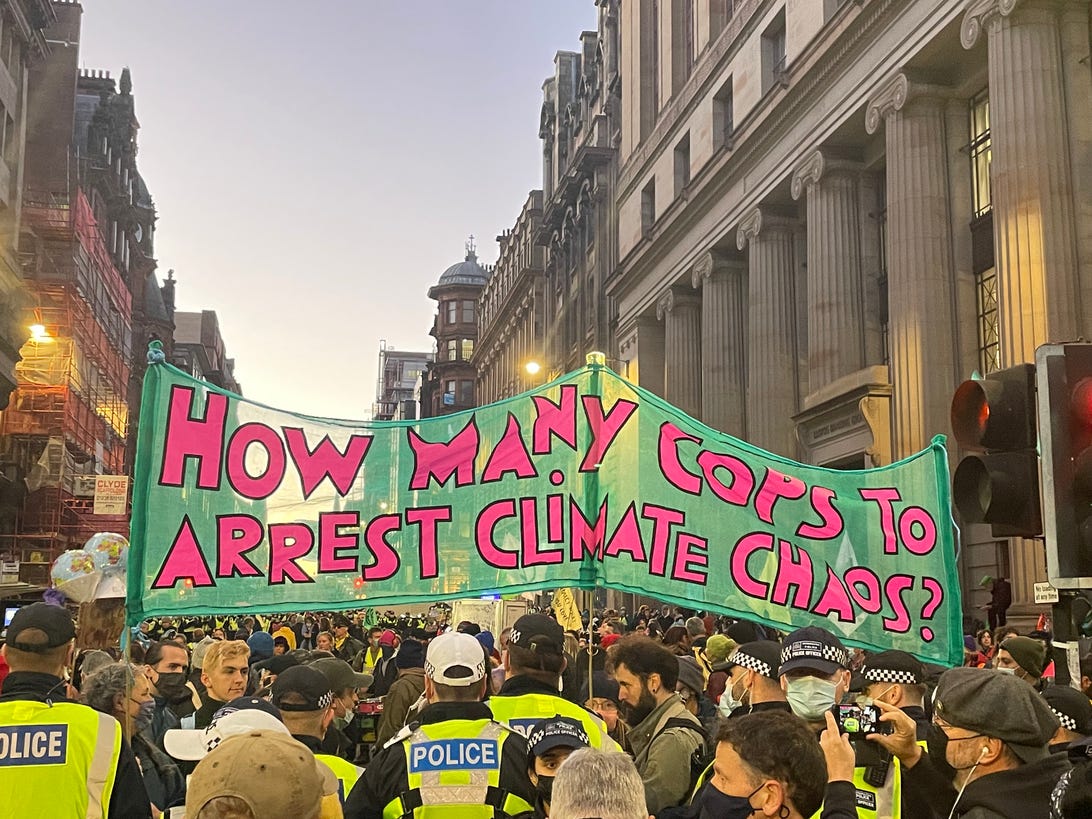
An Extinction Rebellion protest on the streets of Glasgow.
Katie Collins/CNET
The most marginalized voices rarely get a seat at the table in major talks. There was some crossover by those who are representing climate justice outside of the summit and inside, but not as much as campaigners would have hoped for — especially given how much the summit talked about listening to leaders from civil society and Indigenous communities. The latest IPCC report recognized the importance of listening to Indigenous communities who have the knowledge and experience to mitigate climate change through nature-based solutions.
Where it can, the climate justice movement lends support to smaller and developing countries throughout international negotiations, such as the Pacific Island states, backing their calls for proper funding. The movement also helps hold international leaders and organizations accountable by calling them out over their broken promises and lack of inclusivity.
Outside of international summits is still where the majority of climate justice work is happening. “We will be working together strongly, street by street, block by block,” Goodall said at COP26. “We’ll be working with communities and organizations, and we will be delivering on climate justice.”
Does the climate justice movement make a difference?
The pressure applied by activists and civil society groups has produced some results. Governments now recognize industrialized and developed countries need to pay more to meet climate targets and to ensure they’re financially supporting poorer countries.
The climate justice movement also paved the way for the idea of making a just transition to a green economy to be included in the Paris Agreement.
Speaking at COP26, Asad Rehman, climate activist and director of War on Want, pointed out that thanks to the work of activists, global leaders now have to acknowledge climate justice within their negotiations and strategies for tackling the crisis. It’s no longer just a niche concern — at COP26, world leaders and other speakers mentioned it frequently as an important factor.
“There was a time right in these negotiations, when the very word ‘justice’ was only uttered by a very few of us,” he said. “Collectively, we have moved the dial from climate injustice to climate justice.”
At COP26, pressure from activists forced the presidency to finally recognize the importance of funding for loss and damage. A key outcome of the Glasgow Climate Pact (the global accord struck in November at the COP26 climate summit) was the inclusion of a “loss and damage dialogue,” a two-year process in which funding will be discussed.
This was a bittersweet win for activists who have been working for over a decade on this issue. The original language in the text was watered down from establishing a “loss and damage facility” to a “loss and damage dialogue,” following pressure from the US, backed by the EU. And so the fight to secure tangible funding continues.
Despite the urgency of the climate crisis, the climate justice movement is well acquainted with playing the long game. But without its work over the years, governments and fossil fuel companies would have been able to maintain business as usual with little accountability or pushback. It’s why world leaders such as Guterres are now publicly recognizing the important role climate justice activists are playing in fixing the climate crisis.
How can you support the fight for climate justice?
The climate justice movement is by its nature globally minded, but it’s made up of grassroots activists and organizations from all over the world. It’s rare that they gather together en masse at they did at COP26. Most of the time they work to protect their local communities. The likelihood is that no matter where you live in the world, there will be an environmental tussle taking place in your own backyard that needs your support.
As well as learning about what’s going on in your own community, educating yourself about climate justice means listening to people from all over the world — especially those from MAPA countries and marginalized communities. This can be through reading articles and books, following climate activists on social media or watching videos like the one below featuring Emma Watson interviewing young women from the climate justice movement at COP26.
Following COP26, many fingers were pointed at the US for pressuring smaller and developing countries into accepting the watered-down language in the Glasgow Climate Pact. Meanwhile, climate justice activists argue that US President Joe Biden’s current plans to expand domestic fossil fuel production are at odds with the global need to reduce reliance on fossil fuels to prevent further irreversible damage to the planet.
As a major historical polluter, the US has an important role to play in tackling the climate crisis, and US citizens have at their fingertips all the mechanisms of democracy — from voting to writing to their elected representatives — to make their voices heard on the topic.
Finally, you can be part of the global movement by joining a protest, as many around the world did during COP26. Fridays For Future, the organization often represented in the news by Great Thunberg, holds a weekly school strike every Friday. Climate protests are often family-friendly affairs, but always be sure to read up on protecting yourself before you leave home.
